Unlocking Elementary Math Proficiency: Subtraction Worksheets and Regrouping
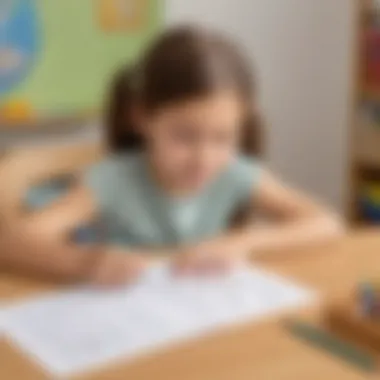
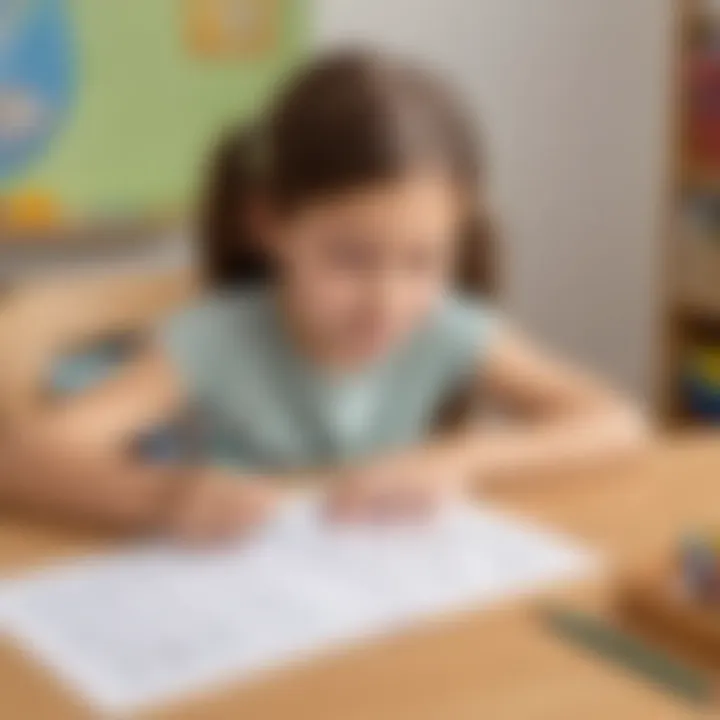
Creative Activities
FTFor students who are visually inclined, participating in creative activities can be a constructive way to reinforce math concepts taught in the classroom. By engaging in hands-on crafts that involve subtraction with regrouping, children can enhance their understanding and retention of the subject matter. These crafts not only make learning fun but also provide a practical application of the theoretical concepts learned in class. As children create visual representations of subtraction problems through crafting, they develop a deeper appreciation for the underlying principles of math that govern regrouping and borrowing.
Craft Ideas
FTWhen introducing craft ideas related to subtraction with regrouping, consider activities such as creating interactive manipulatives using craft supplies like beads or popsicle sticks. These tools can help children physically demonstrate regrouping in subtraction by moving objects from one group to another. Another creative idea could involve designing a mini subtraction game where children use handmade counters to practice regrouping in a playful way. By incorporating these hands-on projects into the learning process, children are more likely to grasp abstract mathematical concepts with ease.
Step-by-Step Guides
FTTo ensure comprehension and encourage independent learning, provide detailed step-by-step guides for each craft activity. Break down the process into manageable tasks, offering clear instructions accompanied by visuals where necessary. Beginning with an explanation of the concept being illustrated, guide children through the materials needed, followed by a systematic approach to constructing the craft. Include checkpoints to reinforce key points about regrouping during each step, fostering a sense of accomplishment as children successfully complete the project.
Educational Value
FTDiscussing the educational benefits of engaging in creative activities centered around subtraction with regrouping is crucial in highlighting the practical relevance of these endeavors. Not only do these crafts reinforce mathematical concepts in a hands-on manner, but they also stimulate cognitive development and problem-solving skills. By tying art and mathematics together, children can perceive math as a dynamic and creative discipline, fostering a positive attitude towards learning and enhancing their overall academic experience. Encourage parents and educators to leverage these craft ideas to supplement traditional teaching methods and promote a holistic understanding of subtraction concepts.
Introduction
Understanding Subtraction with Regrouping
What is Subtraction with Regrouping?
Subtraction with regrouping involves borrowing from higher place values to resolve mathematical operations with lower place values. This technique is crucial in precise arithmetic computations, ensuring accurate results. An essential characteristic of subtraction with regrouping is its ability to instill methodical problem-solving skills in students, preparing them for more advanced mathematical concepts. Although it poses initial challenges, mastering this concept is foundational for numerical fluency and critical thinking.
Why is it crucial for elementary students?
Subtraction with regrouping is crucial for elementary students as it cultivates a deep understanding of place value and number relationships. This skill develops students' mathematical reasoning and enhances their ability to solve complex problems systematically. By mastering this technique early on, students lay a strong foundation for tackling more advanced mathematical concepts with confidence. Despite its initial complexity, learning subtraction with regrouping sets a solid framework for continued mathematical growth and proficiency.
Challenges faced by students
Students encounter various challenges when learning subtraction with regrouping, primarily related to transitioning from simpler mathematical operations. The shift to regrouping demands a higher level of cognitive effort, as students must grasp the concept of borrowing across place values. This can lead to confusion and errors in calculations initially. However, with practice and gradual skill development, these challenges can be overcome, fostering resilience, persistence, and a deeper understanding of numerical operations.
Benefits of Using Worksheets
Enhanced conceptual understanding
Utilizing worksheets to practice subtraction with regrouping enhances students' conceptual understanding of mathematical operations. By repeatedly engaging with structured exercises, students reinforce their grasp of place value concepts and arithmetic strategies. This hands-on approach promotes retention and application of theoretical knowledge to practical problem-solving scenarios, nurturing a holistic mathematical comprehension.
Practice for real-world applications
Worksheets incorporating subtraction with regrouping offer students the opportunity to apply math skills to real-world scenarios. By contextualizing mathematical concepts within everyday situations such as money management or measurement, students gain a deeper appreciation for the relevance and utility of arithmetic. This application-based practice sharpens their analytical skills and prepares them for handling mathematical challenges beyond the classroom.
Improved problem-solving skills
Regular practice on subtraction worksheets enhances students' problem-solving skills by presenting them with diverse numerical challenges. As students tackle a variety of regrouping scenarios, they develop strategic thinking, logical reasoning, and adaptability in approaching mathematical problems. This iterative process of problem-solving fosters resilience, creativity, and independence in students, equipping them with valuable tools for academic and real-world problem-solving.
Practical Tips for Effective Implementation
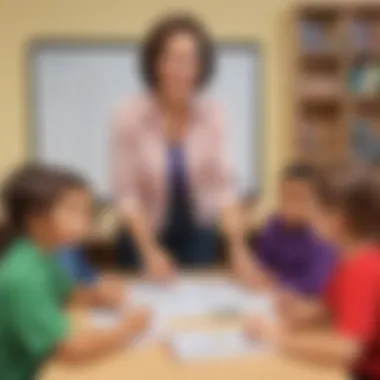

Creating engaging worksheets
When creating worksheets for subtraction with regrouping, ensure that the exercises are not only educational but also engaging for students. Integrate visual elements, relatable themes, and varying levels of difficulty to cater to diverse learning styles and keep students motivated. By incorporating elements of gamification, storytelling, and interactive components, educators can make the learning experience enjoyable and effective, fostering enthusiasm and critical thinking skills in students.
Incorporating real-life scenarios
Incorporating real-life scenarios into subtraction worksheets provides students with concrete contexts for applying mathematical concepts. By using examples from daily life, such as shopping expenses or time management tasks, educators make abstract concepts tangible and relevant to students' experiences. This application of math to real-world situations enhances students' cognitive connections and reinforces the practicality of arithmetic in everyday life.
Providing ample practice opportunities
To ensure mastery of subtraction with regrouping, it is essential to provide students with ample practice opportunities on worksheets. Repetition and reinforcement are key to solidifying understanding and skill development in mathematics. By offering a variety of exercises that progressively increase in complexity, educators enable students to build confidence, fluency, and accuracy in regrouping techniques, empowering them to tackle mathematical challenges with ease.
Engagement Techniques
Interactive exercises
Engage students in subtraction practice through interactive exercises that offer immediate feedback and adaptive learning approaches. Utilize digital platforms or hands-on manipulatives to enhance student engagement and participation. Interactive exercises create an immersive learning environment that encourages active participation, critical thinking, and collaborative problem-solving among students.
Visual aids and manipulatives
Enhance students' understanding of subtraction with regrouping by incorporating visual aids and manipulatives into worksheets. Visual representations of mathematical concepts, such as base-ten blocks or number lines, aid students in visualizing abstract ideas and fostering conceptual understanding. Manipulatives provide a tactile learning experience that appeals to different learning styles, making mathematical concepts more accessible and engaging for students.
Gamified learning approaches
Introduce gamified learning approaches to make subtraction practice enjoyable and motivating for students. By transforming mathematical exercises into game-like challenges or competitions, educators can instill a sense of fun and excitement in learning. Gamified approaches not only promote active participation and skill development but also encourage healthy competition, teamwork, and a positive attitude towards math education.
Monitoring Progress and Assessment
Tracking student performance
Regularly monitor and track students' progress in subtraction with regrouping to ensure ongoing growth and understanding. Use formative assessments, quizzes, and observational data to gauge students' comprehension and identify areas for improvement. Tracking student performance allows educators to tailor instruction, provide targeted support, and celebrate achievements, fostering a culture of continuous learning and individualized student development.
Formative assessment strategies
Implement formative assessment strategies to evaluate students' understanding of subtraction with regrouping in real-time. Utilize techniques such as exit tickets, peer assessments, and self-assessments to gather immediate feedback on students' learning progress. Formative assessments provide insights into students' misconceptions, learning gaps, and mastery of mathematical concepts, guiding instructional decisions and promoting data-driven teaching practices.
Utilizing feedback for improvement
Utilize student feedback obtained through assessments to inform instructional strategies and interventions. By analyzing students' responses, identifying common errors, and addressing misconceptions promptly, educators can offer targeted support and guidance. Utilizing feedback for improvement fosters a culture of reflective practice, personalized learning experiences, and continuous growth for students and educators alike.
Types of Subtraction Worksheets
Subtraction worksheets play a pivotal role in elementary school math education. These worksheets are designed to enhance students' comprehension and mastery of subtraction with regrouping, a fundamental concept in mathematics. By practicing with various types of subtraction worksheets, students can develop confidence, problem-solving abilities, and critical thinking skills. Incorporating different types of subtraction worksheets ensures a well-rounded learning experience, catering to varying learning styles and preferences. Students benefit from exposure to traditional vertical subtraction, horizontal subtraction layouts, and story problems that involve regrouping, offering a comprehensive approach to mastering this essential mathematical skill.
Traditional Vertical Subtraction
Traditional vertical subtraction worksheets provide students with step-by-step examples that break down the regrouping process. These examples offer a structured approach to mastering subtraction with regrouping, guiding students through each step efficiently. The format of traditional vertical subtraction emphasizes the importance of place value and regrouping techniques, highlighting the significance of accurate computation in mathematical operations. While these worksheets are popular for their clarity and simplicity, they also challenge students to apply regrouping rules effectively, enhancing their understanding of mathematical concepts.
Step-by-step examples


Step-by-step examples in traditional vertical subtraction worksheets serve as foundational learning tools for students. These examples demonstrate the regrouping process in a systematic manner, clarifying the steps required to subtract multi-digit numbers accurately. By practicing with step-by-step examples, students can sharpen their regrouping skills and develop confidence in solving complex subtraction problems. The detailed nature of these examples enables students to grasp the regrouping concept thoroughly, paving the way for successful problem-solving outcomes.
Practice exercises
Practice exercises in traditional vertical subtraction worksheets engage students in repetitive and varied subtraction tasks. These exercises offer opportunities for students to apply regrouping strategies independently, consolidating their learning and reinforcing computational fluency. Through consistent practice, students can strengthen their ability to execute regrouping techniques accurately and efficiently. Practice exercises not only enhance students' procedural fluency but also promote critical thinking as students encounter diverse subtraction scenarios, honing their problem-solving proficiency.
Horizontal Subtraction Layouts
Horizontal subtraction layouts present a different approach to subtracting numbers, offering a unique perspective on regrouping concepts. These layouts facilitate a visual comparison of numbers, encouraging students to analyze quantities and perform subtraction operations horizontally. By contrasting vertical and horizontal subtraction formats, students gain insights into alternative methods of regrouping and subtracting multi-digit numbers. The application of horizontal subtraction layouts in different contexts enhances students' adaptability in solving subtraction problems, fostering a comprehensive understanding of regrouping techniques.
Comparison to vertical format
The comparison to the vertical format in horizontal subtraction layouts highlights the efficiency and versatility of different subtraction methods. Horizontal layouts provide a spatial orientation that allows students to manipulate numbers more dynamically, promoting flexibility in regrouping strategies. By juxtaposing horizontal and vertical subtraction formats, students can choose the approach that aligns best with their cognitive preferences, fostering personalized learning experiences. The visual representation of numbers in horizontal layouts offers a holistic view of subtraction processes, aiding students in conceptualizing regrouping principles effectively.
Application in different contexts
The application of horizontal subtraction layouts in various contexts broadens students' problem-solving capabilities beyond traditional vertical subtraction. By contextualizing subtraction operations in different scenarios, students can apply regrouping techniques to real-world situations, enhancing their computational skills and mathematical reasoning. Horizontal subtraction layouts encourage students to adapt regrouping strategies to diverse mathematical problems, preparing them for practical applications of subtraction in everyday life. The exposure to different contexts fosters a deeper understanding of regrouping concepts, empowering students to approach subtraction with versatility and confidence.
Story Problems Incorporating Regrouping
Story problems incorporating regrouping are engaging tasks that challenge students' problem-solving skills and contextual understanding of subtraction. Through narrative-based scenarios, students navigate complex mathematical situations that require regrouping to derive solutions. Story problems not only enhance students' computational proficiency but also cultivate their analytical thinking and logic. By incorporating regrouping into story problems, students develop a deeper appreciation for the practical relevance of subtraction and its applications in everyday challenges.
Enhancing problem-solving skills
Story problems incorporating regrouping serve as catalysts for developing students' problem-solving prowess. These problems present students with real-world challenges that necessitate regrouping strategies to solve effectively. By engaging with story problems, students sharpen their analytical abilities, logical reasoning, and strategic thinking. The problem-solving skills honed through these exercises empower students to tackle complex mathematical problems with confidence and perseverance, instilling a sense of achievement in their mathematical journey.
Contextual understanding
The contextual understanding gained from story problems incorporating regrouping enriches students' perception of subtraction as a practical tool. By situating regrouping within meaningful contexts, students grasp the relevance of subtraction in different scenarios, from everyday dilemmas to academic pursuits. Understanding the context in which regrouping is employed not only enhances students' mathematical proficiency but also deepens their appreciation for the utility of subtraction in diverse situations. The contextual understanding cultivated through story problems fosters a holistic approach to applying regrouping techniques, equipping students with essential skills for problem-solving and critical thinking.
In the fast-paced world of elementary school education, the integration of subtraction worksheets with regrouping plays a pivotal role in honing young minds in the realm of mathematics. Understanding the intricacies of subtraction with regrouping is not just about numbers; it lays the foundation for critical thinking and problem-solving skills. This article delves deep into the significance of subtraction worksheets with regrouping, offering a comprehensive guide to maximizing their potential for improving math proficiency among elementary students.
Interactive Online Resources
In today's digital age, access to interactive online resources is paramount in enhancing elementary school math skills. These resources provide a dynamic platform for students to engage with mathematical concepts actively. By incorporating interactive online tools into the learning process, educators can create a more immersive and practical experience for young learners.
Digital Platforms for Practice
Virtual manipulatives
Virtual manipulatives serve as virtual, interactive tools that simulate the physical manipulation of objects for mathematical exploration. By using virtual manipulatives, students can visualize mathematical concepts in a tangible way, promoting a deeper understanding of abstract ideas. The tactile nature of virtual manipulatives enhances spatial reasoning and supports kinesthetic learners in grasping mathematical principles more efficiently.
Interactive games
Interactive games infuse an element of fun and competition into the learning process, making it more engaging and motivating for students. These games often incorporate logic puzzles, memory challenges, and problem-solving tasks that enable students to apply mathematical concepts in a practical context. Additionally, interactive games can help students develop critical thinking skills and improve their mental math abilities through interactive engagement.
Online quizzes
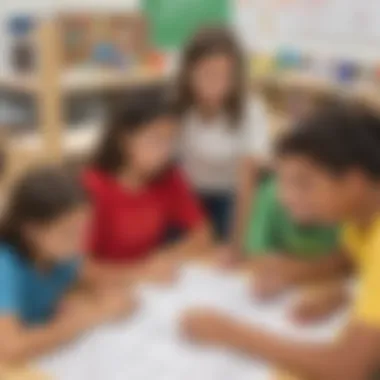
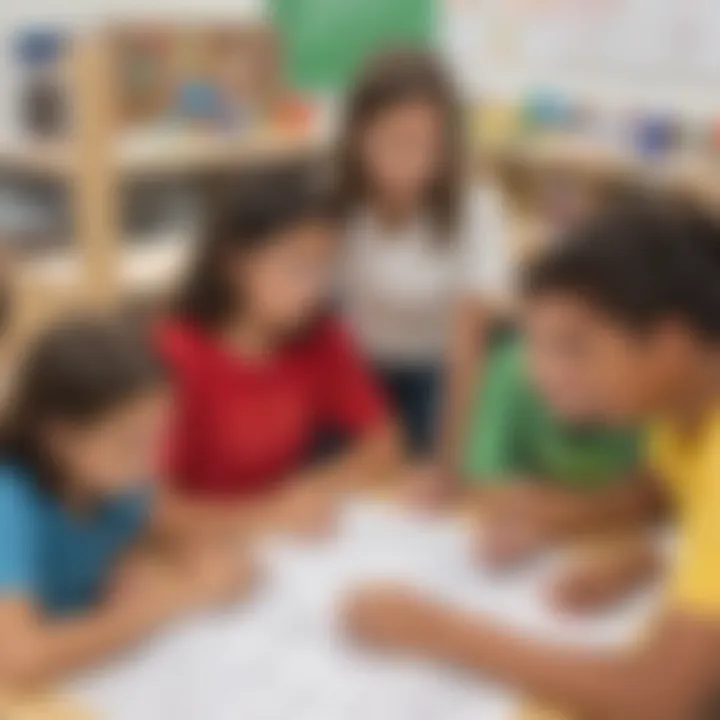
Online quizzes offer a structured approach to assessing students' understanding of mathematical concepts. These quizzes can be customized to target specific skills or topics, providing immediate feedback to both students and educators. By incorporating online quizzes into the learning environment, teachers can gauge students' progress accurately and tailor instruction to address individual needs effectively.
Virtual Tutoring and Support
Embracing virtual tutoring and support mechanisms can bridge the gap between classroom learning and individualized instruction. Live tutoring sessions provide students with real-time guidance and clarification on challenging topics, fostering a supportive learning environment. Instant feedback mechanisms offer timely assessments of student performance, allowing educators to intervene promptly and provide targeted assistance. Personalized learning paths cater to students' unique learning styles and pace, ensuring that each child receives tailored instruction to maximize their mathematical potential.
Incorporating Regrouping in Real-life Situations
Incorporating regrouping skills into real-life scenarios is vital for elementary students to grasp the practical applications of math. By connecting mathematical concepts to everyday situations, children can develop a deeper understanding and appreciation for the subject. The integration of regrouping in real-life situations offers a hands-on approach to learning, bridging the gap between theory and practice. This section will delve into various aspects that highlight the importance and benefits of incorporating regrouping in real-life scenarios.
Everyday Scenarios for Application
Supermarket Shopping Examples
Supermarket shopping can serve as a relevant and engaging context for applying regrouping skills in math. By calculating prices, discounts, and total expenses, students can practice subtraction with regrouping in a familiar setting, enhancing their problem-solving abilities. The dynamic nature of supermarket scenarios provides practical challenges that require thoughtful calculations and decision-making, making it a valuable choice for reinforcing math skills. The interactive element of selecting items and managing a budget in a shopping context can captivate children's interest and solidify their understanding of regrouping. Supermarket shopping examples not only offer realistic situations but also encourage financial literacy and numeracy skills crucial for everyday life.
Time Management Analogies
Introducing time management analogies in math exercises can help students grasp the concept of regrouping in a different light. By associating time allocation with regrouping digits in subtraction, children can visualize the importance of organizing and prioritizing tasks effectively. This approach not only enhances mathematical proficiency but also cultivates essential life skills such as planning, strategizing, and optimizing resources. Time management analogies provide a practical linkage between mathematical concepts and daily routines, fostering a holistic understanding of regrouping beyond numerical calculations. While challenging, time management analogies offer a unique perspective that encourages critical thinking and application of regrouping strategies in diverse scenarios.
Money Calculation Exercises
Money calculation exercises serve as a practical avenue for incorporating regrouping skills into real-life contexts. By handling monetary transactions, budgeting, and calculating change, students can experience the significance of regrouping in financial scenarios. Money calculation exercises not only reinforce subtraction skills but also instill financial literacy and decision-making abilities in children. The tactile nature of counting coins and bills enhances the learning experience, making abstract mathematical concepts tangible and relevant. Engaging with money calculation exercises not only sharpens math skills but also equips students with practical knowledge essential for navigating real-world financial situations.
Critical Thinking Challenges
Puzzle-Solving Activities
Offering puzzle-solving activities as part of math education encourages students to think creatively and strategically when applying regrouping techniques. By presenting complex puzzles that require logical deduction and systematic problem-solving, children can hone their critical thinking skills while practicing subtraction with regrouping. Puzzle-solving activities foster a sense of achievement and satisfaction upon successfully solving challenges, motivating students to explore mathematical concepts in depth. The interactive and challenging nature of puzzles stimulates cognitive functions and analytical reasoning, complementing traditional math instruction with an engaging twist.
Logic-Based Problems
Introducing logic-based problems in math exercises can elevate students' understanding of regrouping by emphasizing reasoning and pattern recognition. By tackling problems that require logical deductions and inference, children not only refine their subtraction skills but also develop logical thinking and problem-solving capabilities. Logic-based problems provide a structured approach to applying regrouping techniques in diverse scenarios, nurturing analytical skills and attention to detail. The systematic nature of logic-based exercises encourages methodical thinking and strategic planning, enhancing students' overall proficiency in mathematical operations.
Cross-Curricular Connections
Establishing cross-curricular connections through regrouping activities can enrich students' learning experience by integrating math with other subjects. By incorporating regrouping into science experiments, language arts projects, or social studies investigations, children can explore mathematical concepts in various contexts and disciplines. Cross-curricular connections encourage interdisciplinary thinking, fostering a holistic approach to learning and problem-solving. By bridging regrouping strategies with diverse subjects, students can appreciate the versatility and applicability of math beyond traditional arithmetic, enhancing their cognitive flexibility and academic curiosity.
Conclusion
The Conclusion section of this article serves as a pivotal point in summarizing the significance of enhancing elementary school math skills with subtraction worksheets, specifically those involving regrouping. It encapsulates the essence of the entire discourse, shedding light on the critical importance of mastering subtraction at an early stage and how it forms the basis for more advanced mathematical concepts. By delving into the varied aspects of regrouping within subtraction, this article offers a comprehensive guide that not only aids in skill development but also nurtures a deep-rooted understanding of mathematical principles.
Driving Student Success
Empowering Young Learners
On the subject of empowering young learners, the heart of this article lies in fostering a sense of independence and confidence in students as they tackle mathematical challenges. Empowerment in this context refers to equipping young minds with the tools and knowledge needed to navigate complexities in subtraction with ease. By instilling a growth mindset and promoting resilience, this approach cultivates a positive attitude towards learning, enhancing problem-solving skills and encouraging critical thinking. Empowering young learners through subtraction worksheets with regrouping not only builds mathematical proficiency but also instills a sense of achievement and capability in students.
Building a Strong Math Foundation
In building a strong math foundation, this article stresses the importance of laying a solid groundwork in subtraction skills for future mathematical endeavors. A robust foundation ensures that students grasp the core principles of subtraction, understand the rationale behind regrouping, and can apply these concepts accurately. By reinforcing fundamental concepts through targeted practice and engaging activities, students develop a mathematical fluency that paves the way for tackling more complex mathematical operations. Building a strong math foundation not only boosts academic performance but also instills a sense of confidence and competence in students, setting the stage for continued success in mathematics.
Preparing for Higher-Level Concepts
Preparing for higher-level concepts heralds the progression from basic arithmetic to more advanced mathematical domains, underscoring the need to hone subtraction skills early on. By mastering regrouping techniques and problem-solving strategies, students are better equipped to handle advanced mathematical concepts with ease and precision. This preparation not only facilitates a smoother transition to higher-level mathematics but also cultivates analytical thinking, pattern recognition, and logical reasoning skills. By solidifying the groundwork in subtraction through regrouping worksheets, students can confidently approach complex mathematical challenges and embrace higher-level concepts with readiness and enthusiasm.







